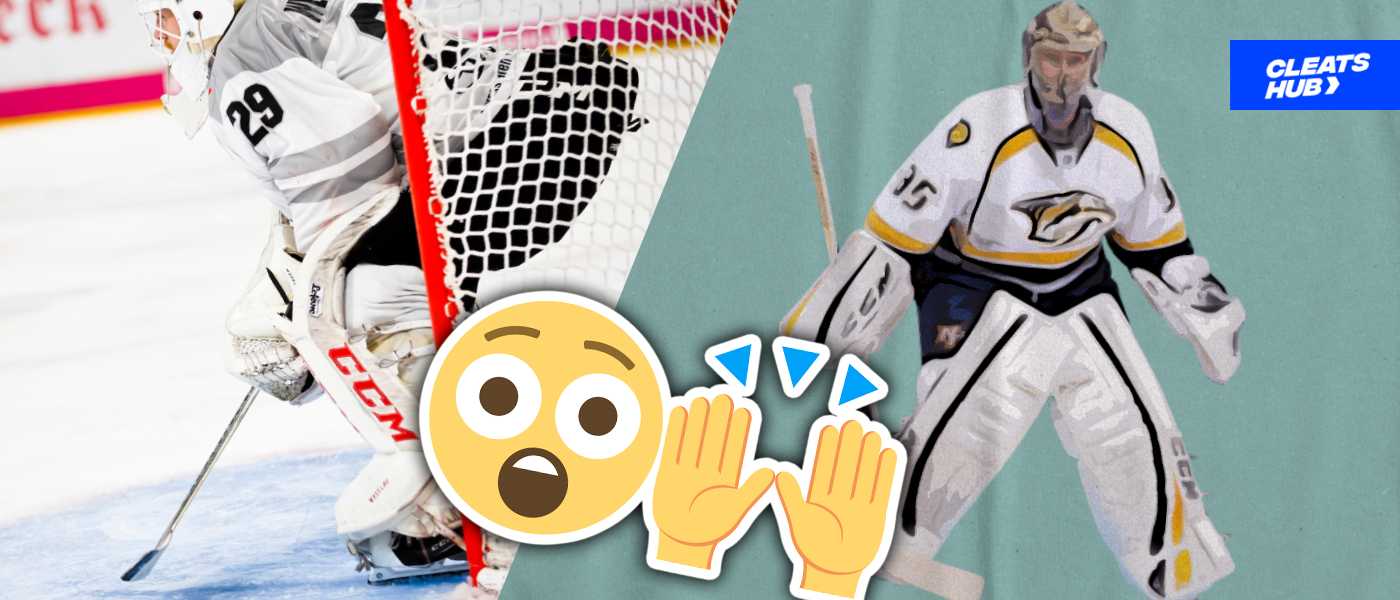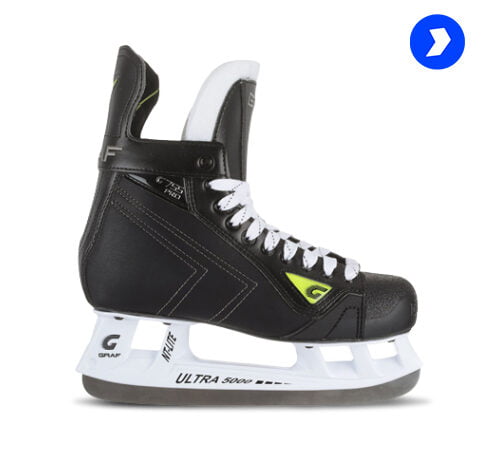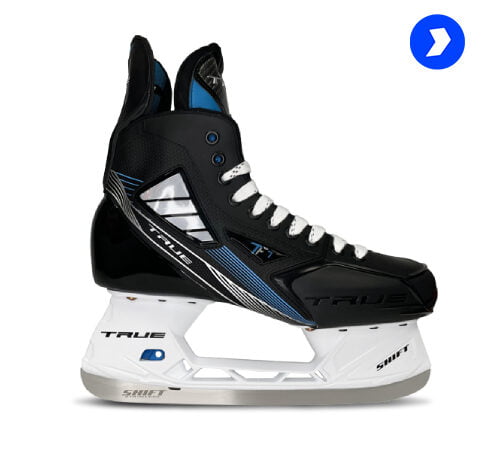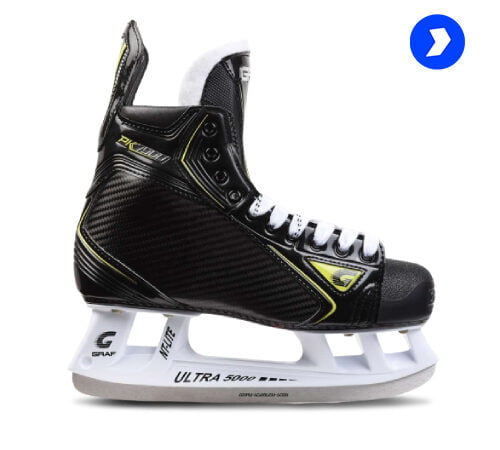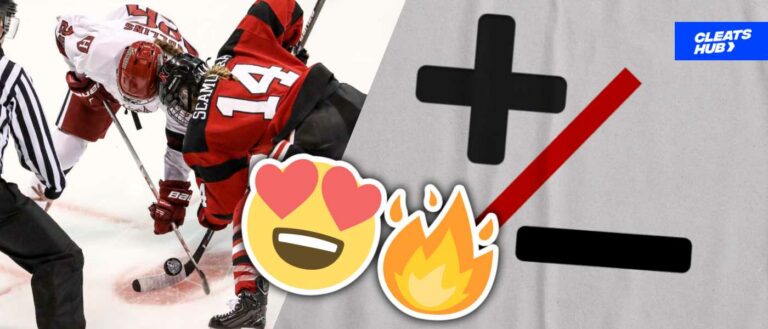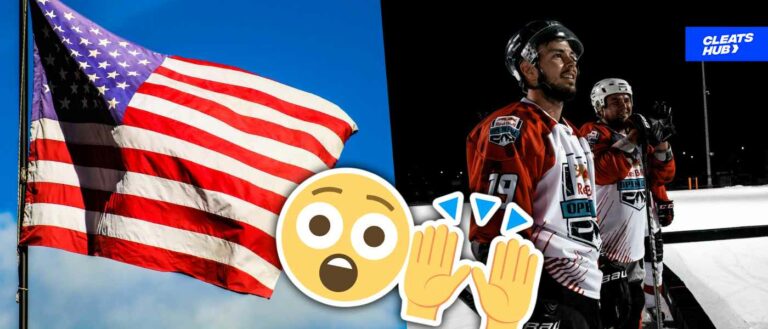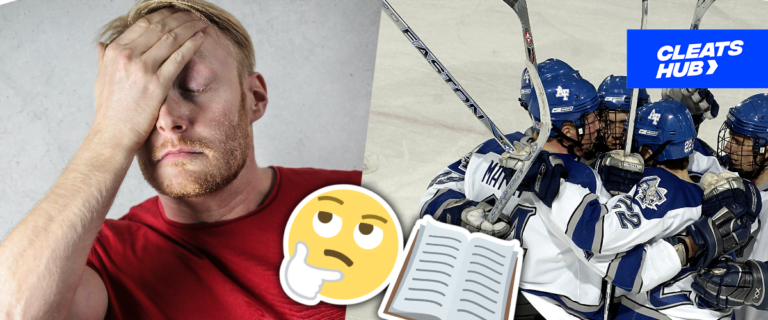Where Can Goalies Play The Puck In Ice Hockey?
A North American (NHL) ice hockey rink is 200ft by 85ft in size. For IIHF and other international games, it is slightly wider. Ice hockey goalies, on the other hand, are not permitted to play the puck anywhere on the rink. Aside from their appointed position (in front of the goal net), goalies can only move so far in ice hockey.
Sections Of The Ice The Goalie Is Allowed To Play The Puck
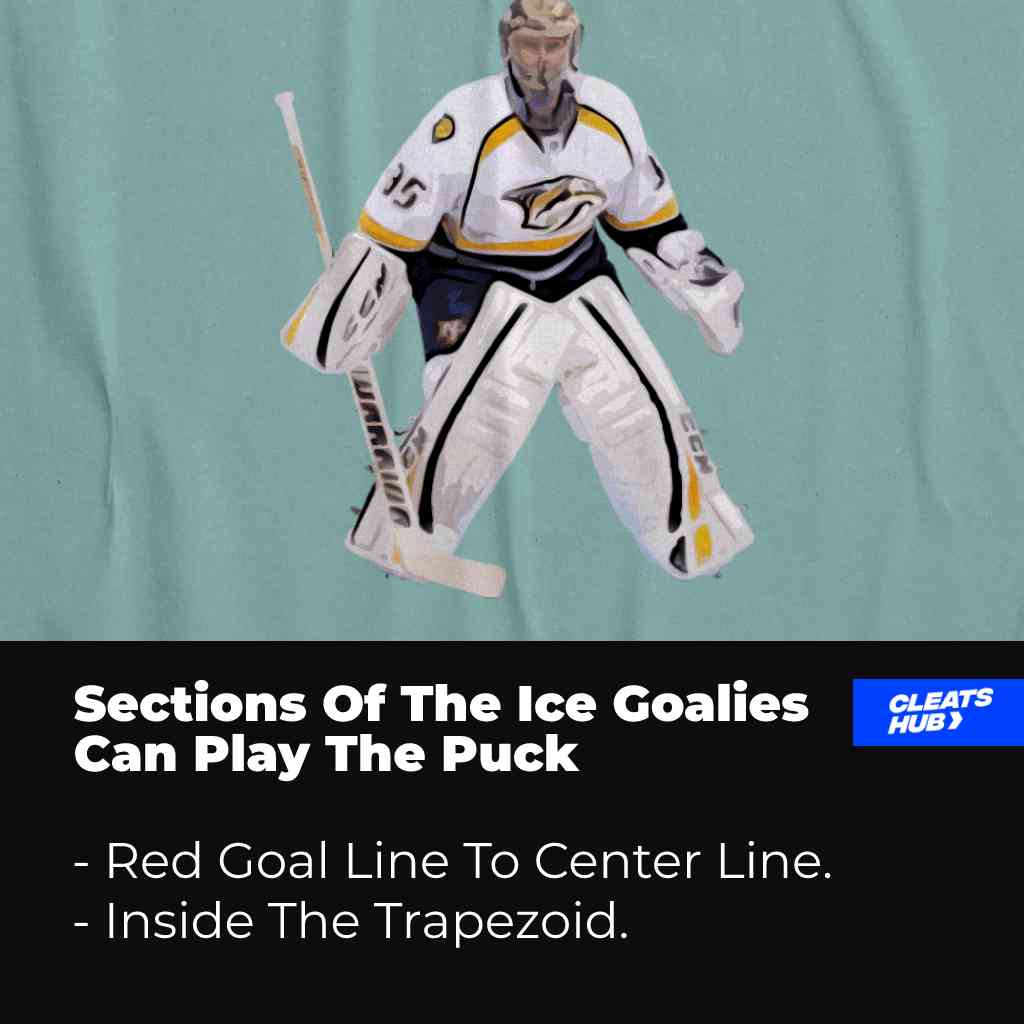
Ice hockey goalies are allowed to play the puck from the red goal line to the red center line and inside the trapezoid.
- Red Goal Line to Center Line
Ice hockey goalies are permitted to play the puck from the red goal line to the red center line on their side of the ice. This implies that once they cross the red center line onto the opposition team’s part of the ice, they are not permitted to play the puck or even attack any player. A goalkeeper who violates this regulation will get a two-minute penalty.
Nevertheless, since goalies are not permitted to serve penalty time, a player from his side will be sent to the penalty box in his place, giving the opposition team a power play.
This regulation is unusual in modern ice hockey since it is practically never used. This is due to goalies never leaving the goaltender’s crease. Nonetheless, it is extremely likely that goalies used to play the puck over the red center line into the other team’s end of the rink during the early days of the game. - Inside The Trapezoid
Aside from the area from the goal line to the center line, goaltenders are only permitted to play the puck inside the trapezoid at the rear of the goal line. See images and more details on the ice hockey trapezoid.
Sections Of The Ice The Goalie Cannot Play The Puck
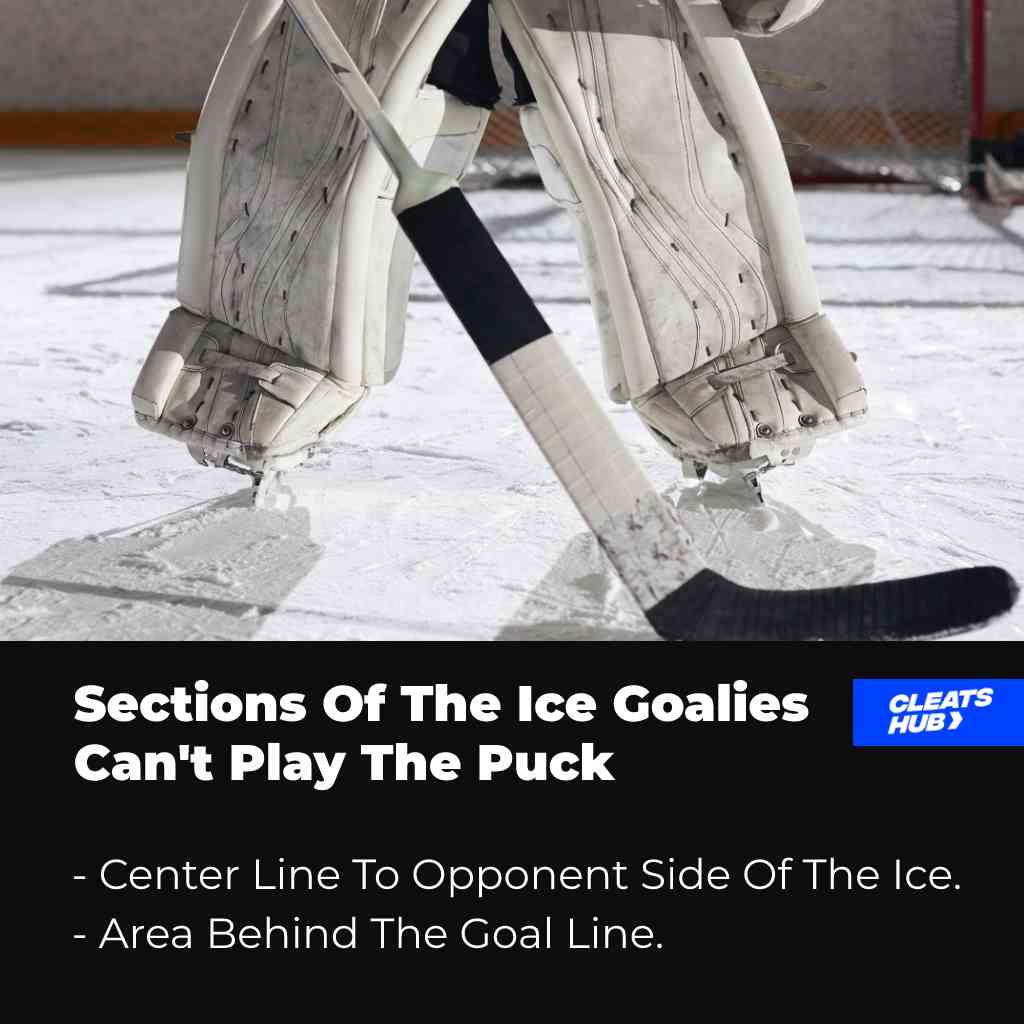
There are two sections on the ice where ice hockey goaltenders are not allowed to play the puck. The first is beyond the center goal line, and the second is at the back of the goal line.
- Center Line Into Opponents Side Of The Ice
From the red center line, all the way to the end of the rink at the opposing team’s side of the ice is off-limit for goalies in ice hockey. As mentioned earlier, they are not allowed to play ice hockey in any way over the red center line.
This means they cannot touch the puck or even bodycheck an opponent. However, if there is a stoppage, they can move up to the other side of the ice. - Area Behind The Goal Line
Aside from the trapezoid, goalies in ice hockey are not permitted to play the puck behind the goal line. This regulation was brought about by the impact of specific goalies who were adept at stickhandling around the goal net.
Reason For Goalie Restriction On The Ice
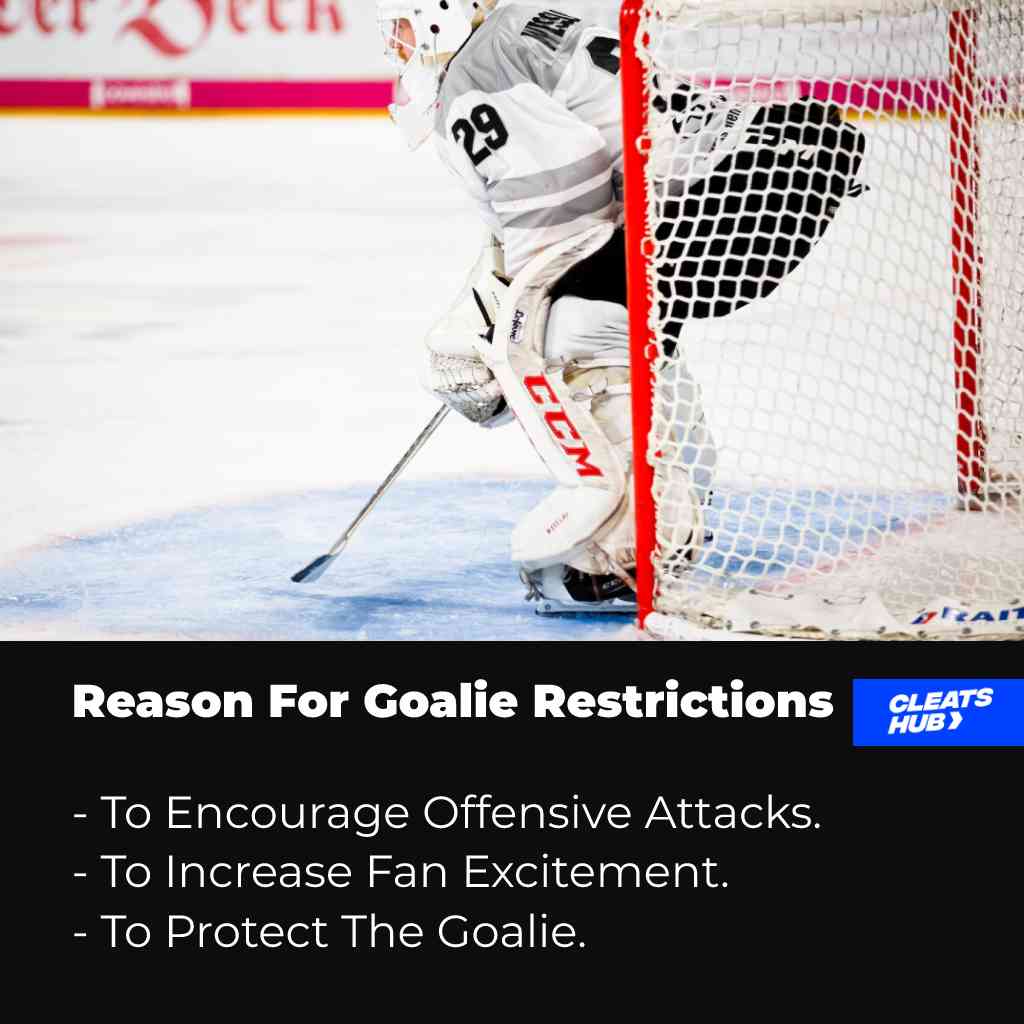
On an ice rink, the restriction of goalies makes room for a stronger offensive strategy. An excellent illustration is the prohibition against goalies playing the puck behind the net (the trapezoid rule).
Goalies enjoyed moving behind the net to recover the puck before the trapezoid rule was implemented, especially if the puck was dumped in. As a result, goalies may hand the ball over to defenses with ease, allowing them to switch to an offensive stance.
That was a good defensive approach, but it dulled the game and lessened the offensive energy in contests.
It is also preferable for goalies to be unable to cross the red center line. This is because goalies are favored in ice hockey rules, which result in penalties for bodychecks and hits to goalies.
If a goalkeeper gets bodychecked while in the red zone, there may be player disputes and penalties that result from the fight.
Disadvantage Of Goalies Playing The Puck
An empty net goal is the drawback of any goalie abandoning the goal net. When the goalie is not guarding the net, ice hockey players can score by shooting the puck into any empty spot in the goal.
In circumstances like this, defensemen can only do so much to keep the puck safe.
Conclusion
Goalies are the most protected players in ice hockey and their position is the most difficult. Ice hockey goalies determine if a game will be won or lost and if they commit any error it is obvious to everyone on the ice.
Thanks for reading.
Psstt…. The Top Performing Cleats

